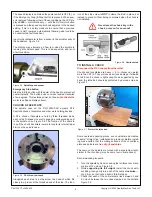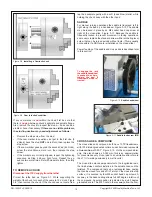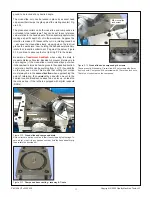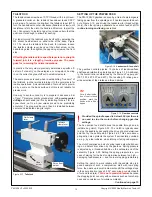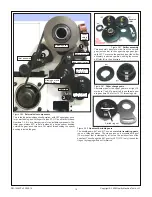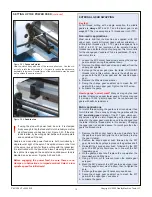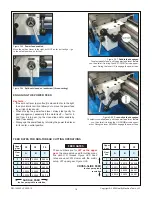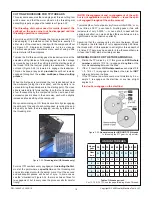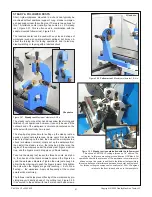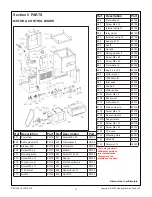
21
PM-1228VF v3 2020-10
Copyright © 2020 Quality Machine Tools, LLC
STEADY & FOLLOWER RESTS
Short, rigid workpieces mounted in a chuck can typically be
machined without additional support. Long, slender workpiec-
es need support near the cutting tool. There are two options for
this: 1. A tailstock center (usually a live center), or; 2. A steady
rest, Figure 3-37. This is often used in combination with the
saddle-mounted follower rest, Figure 3-38.
The tailstock center can be used with any size and shape of
workpiece (such as non-symmetrical castings), but it may ob
-
struct the turning tool for facing operations, and it also may
disallow drilling or tapping with a tailstock chuck.
Figure 3-37
Steady rest
Maximum diameter 2-3/4 in.
File photos
Figure 3-38
Follower rest
Maximum diameter 1-3/4 in.
File photo
The steady rest on the other hand does allow face turning and
tailstock chuck operations; however, it can only be used if the
outboard end of the workpiece is circular and centered on the
lathe axis with practically zero runout.
The step-by-step procedure for setting up the steady rest de-
pends on personal preferences. Some users first install the
steady rest casting on the bed, then mount the workpiece in a
chuck (or between centers); others set up the workpiece first,
then install the steady rest on the lathe bed. Either way, the
region of the workpiece under the steady rest fingers must run
true, and the fingers must not apply any off-axis loading.
To set up the steady rest, loosen the three hex nuts, inset pho-
to, then back out the thumbscrews to spread the fingers be
-
yond the workpiece diameter. Tighten the nuts just enough to
allow the thumbscrews to push the fingers inward. Fully tighten
the nuts when the fingers are gently touching — but not de
-
flecting — the workpiece. Apply oil frequently at the contact
points while machining.
The follower rest helps prevent flexing of the workpiece by pro
-
viding support directly ahead of the cutting tool, Figure 3-39.
It is secured to the saddle with two 8 mm socket head screws.
Figure 3-39
Steady rest in combination with the follower rest
This shows a PM-1228VF cutting a thread on 1/4” drill rod. The
cutting tool in this case was shop-ground from an HSS blank. For
operations like this the outer end of the workpiece is sometimes sta-
bilized using a live center in addition to the follower (not possible in
this setup because of interference between live center and toolpost).
For thread cutting the compound is usually set at 29 or 30 degrees
relative to the front-to-back axis, as in the inset photo.



